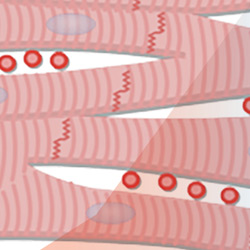Complex Dynamics of Cardiac Cells and Tissue: Advances in Methods and Mechanisms
 Cardiac cells and tissue exhibit a broad range of nonlinear behavior, including period-doubling bifurcations, spiral wave formation, and chaotic dynamics. In recent years, significant progress has been made in understanding and analyzing these complex phenomena. Advances in experimental and clinical techniques have enabled the acquisition of new types of data and higher-resolution recordings. At the same time, increasingly sophisticated mathematical models and theoretical frameworks have deepened our insight into the mechanisms underlying these dynamics. Furthermore, machine-learning methods have opened new avenues for forecasting, classification, and control, while novel statistical tools have improved the characterization of heterogeneity, quantified uncertainty, and enhanced predictive accuracy.
Cardiac cells and tissue exhibit a broad range of nonlinear behavior, including period-doubling bifurcations, spiral wave formation, and chaotic dynamics. In recent years, significant progress has been made in understanding and analyzing these complex phenomena. Advances in experimental and clinical techniques have enabled the acquisition of new types of data and higher-resolution recordings. At the same time, increasingly sophisticated mathematical models and theoretical frameworks have deepened our insight into the mechanisms underlying these dynamics. Furthermore, machine-learning methods have opened new avenues for forecasting, classification, and control, while novel statistical tools have improved the characterization of heterogeneity, quantified uncertainty, and enhanced predictive accuracy.
This Special Topic invites submissions that investigate the nonlinear electrical and/or chemical dynamics of cardiac cells and the emergent behaviors that arise when they are coupled in tissue, from one to three dimensions. Contributions employing innovative theoretical, computational, experimental, or clinical approaches aimed at analyzing, predicting, and/or controlling these dynamics are especially welcome. Submissions also may focus on applying novel methods to mathematical models, experimental recordings, or clinical data.
Guest Editors
Elizabeth M. Cherry, Georgia Institute of Technology, USA
Flavio H. Fenton, Georgia Institute of Technology, USA
Christopher Marcotte, Durham University, UK
Carolyn Martsberger, Wofford College, USA
